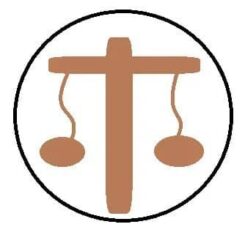The rule created an action on the case for intentional infliction of physical harm by indirect means. Briefly put, it states that any act done willfully, calculated to cause and actually, causing physical harm to another (per Wright in Janvier v. Sweeney) is an actionable wrong,
Elements
These are:
a) a deliberate or willful act or misrepresentation;
b) calculated to cause harm to the plaintiff; and
c) actually causing harm to the plaintiff.
The locus classicus is Wilkinson v. Downton. In that case, the defendant in the execution of a practical joke, falsely told plaintiff that her husband had asked him to tell her that he had been injured in an accident with both legs broken and that she was to go at once in a cab to get him. She suffered a nervous shock, vomiting and other physical consequences. She spent a large sum on medical expenses as a result. The consequences were not in any way the result of previous ill-health; for she was in ordinary state of health and mind.
It was held that an action would lie to recover the expenses on medical treatment, per Wright J: “The defendant has, as I assume for the moment, willfully done an act calculated to cause physical harm to the plaintiff i.e. to infringe her legal right to personal safety, and has thereby in fact caused physical harm to her. That proposition, without more, appears to me to state a good cause of action, there being no justification alleged for the act. This willful injuria is in law malicious, although no malicious purpose to cause harm which was caused, nor any motive of spite, is imputed to the defendant….
One question is whether the defendant’s act was so plainly calculated to produce some effect of the kind which was produced, that an intention to produce it ought to be imputed to the defendant regard being had to the fact that (lie effect was produced on a person proved to be in an ordinary stale of health and mind. I think that it was. It is difficult to imagine that such a statement, made suddenly and with apparent seriousness, could fail to produce grave effects under the circumstances upon any but an exceptionally indifferent person, and therefore an intention to produce such an effect must be imputed, and it is no answer in law to say that more harm was done than anticipated, for that is commonly the case with most wrongs. …”
He continued with the following example: “… Suppose that a person is in a precarious and dangerous condition, and another person falsely tells him that his physician has said that he has but a day to live. In such a case if death ensued from the shock caused by the false statement, I cannot doubt that the case might be one of criminal homicide; or that, if a serious aggravation of illness ensued, damages might be recovered.”
On the facts there was no precedent before 1875. The plaintiff could not have brought an action for trespass, which lay only for the direct physical infliction of harm or threat of it. In this case, the plaintiff had been physically injured. But only as a result of her mental shock following upon her belief in the words spoken. She could not have sued for this mental suffering in the tort of deceit because of the absence of fraud and reliance. Here she was claiming for damages not for reliance but for her mere belief in the truth of what the defendant said and the effect that belief had on her mind.
The rule was applied in Janvier v. Sweeney.
In that case, the plaintiff was a maidservant; the defendants were detectives. They wanted to read certain letters of the plaintiff’s mistress. They represented to her that she was suspected of collaborating with the Germans and, if she did not bring out the letters they would report her boy-friend to the authorities as a traitor and have her deported. The plaintiff fell ill, and had nervous shock. The court held that the act of the defendant was wilful and aimed at causing harm under the rule in Wilkinson v. Downton.
Two other cases may be considered.
The first is Burnett v. George: The plaintiff was subjected to harassment by unwelcome phone calls. The rule in Wilkinson v. Downton was thought to be applicable but the plaintiff failed because she could not prove any damage, i.e. impairment to her health.
The second is Khorasandjian v. Bush: This was a case of harassment by phone calls. The plaintiff succeeded on the Wilkinson v Downton principles because of the risk that the cumulative effect of continued and unrestrained phone calls would cause physical or psychiatric illness.
In the recent case of D v. National Society for the Prevention of Cruelty to Children in which Lord Denning was unwilling to extend the principle, the defendants had information that die plaintiff was maltreating her child. They sent an officer to investigate. The information was false and the plaintiff was severely shocked by the experience. The issue was whether the defendants were bound to disclose the identity of their informant; but disclosure here depended on whether there was a claim against the defendants on the facts in the first instance. In the end, it was decided that disclosure must be refused on public interest grounds and therefore there was no claim against the defendants.
